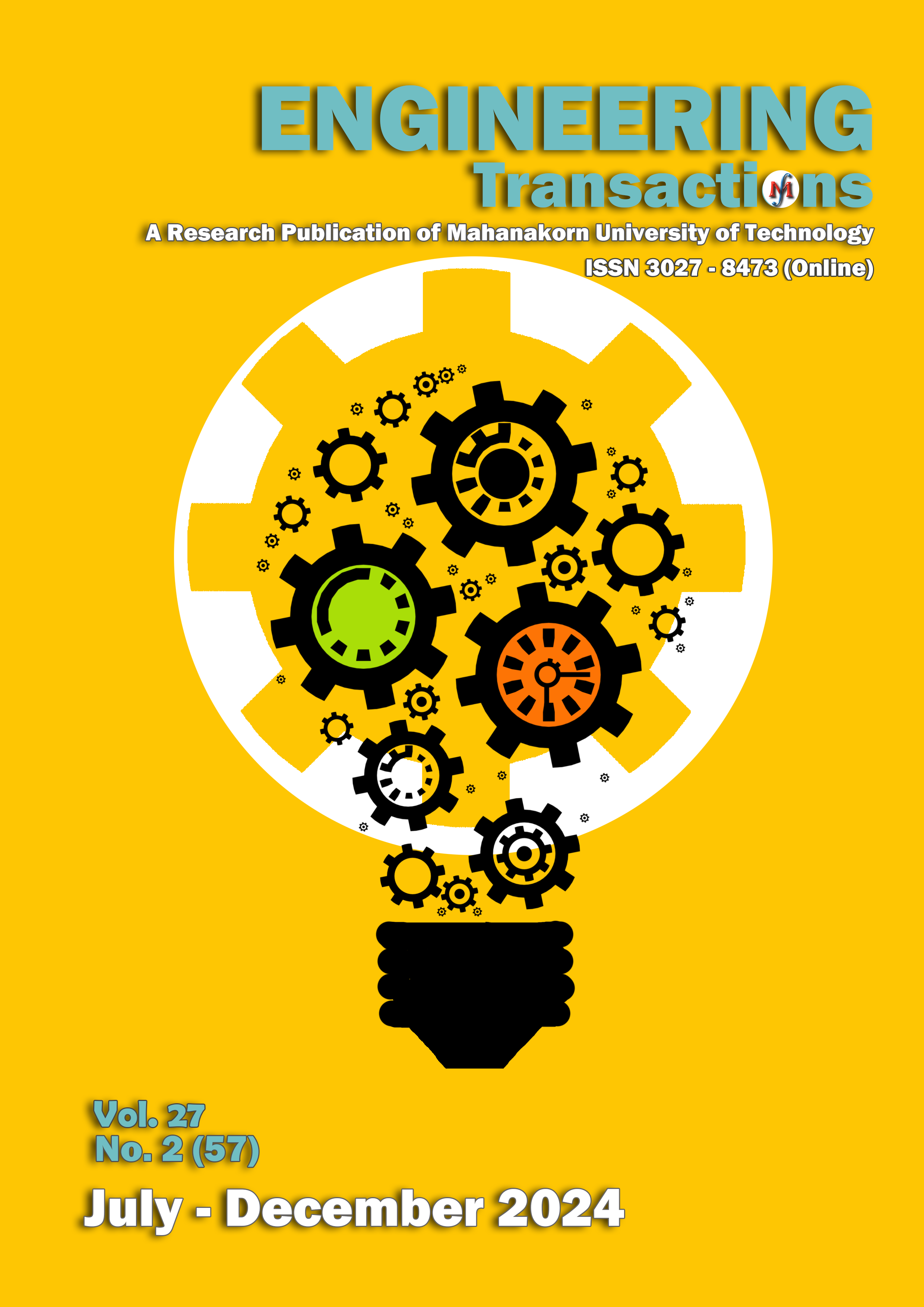A Study of Thermal Comfort and Energy Saving of using Air-Conditioner Combine with Electric Fan
Main Article Content
Abstract
This research aimed to study the thermal comfort of people in an office environment when using air conditioner combined with electric fan. The temperature in the test room was adjusted from 27-30 °C, the average wind speed of the fan was 0.28 m/s, and the desk fan was 1.5 meters away from the subject. Total subjects were consisted of 50 people, 37 males and 13 females, with an average age of 30.53 years. They were in a sitting position, an activity level of 1.2 met., an average clothing value was 0.44 clo. The results showed that subjects had the highest level of satisfaction at a room temperature of 27 °C with a non-swing fan, which was 86%. The results of the experiment showed that the energy saving when adjusting the room temperature from 26-27 °C was 15.82%.
Article Details

This work is licensed under a Creative Commons Attribution-NonCommercial-NoDerivatives 4.0 International License.
Copyright @2021 Engineering Transactions
Faculty of Engineering and Technology
Mahanakorn University of Technology
References
Energy Balance of Thailand 2022, กระทรวงพลังงาน ปีที่ 9 ฉบับที่ 9, ISSN : 2408-2775, 2565.
N. Yamtraipat, J. Khedari, J. Hirunlabh, and J. Kunchornrat, “Assessment of Thailand indoor set-point impact on energy consumption and environment,” Energy Policy, vol. 34, pp.765-770, 2006.
N. Yamtraipat, J. Khedari, and J. Hirunlabh, “Thermal comfort standards for air conditioned buildings in hot and humid Thailand considering additional factors of acclimatization and education level,” Solar Energy, vol. 78 (4), pp.504-517, 2005.
นุภาพ แย้มไตรพัฒน์, โจเซฟ เคดารี, และ จงจิตร์ หิรัญลาภ, “อิทธิพลของปัจจัยทางกายภาพที่มีต่อความรู้สึกทางความร้อนของคนไทยในสภาพแวดล้อมแบบสานักงาน,” วิศวสารลาดกระบัง, vol. 21, no.1, pp. 41-46, 2004.
P.O. Fanger, “Thermal Comfort Analysis and Application in Environmental Engineering,” McGraw-Hill Book Company, New York, pp. 1-244, 1972.
ASHRAE, Standard 55--92, “Thermal Environmental Conditions for Human Occupancy,” American Society of Heating, Refrigerating, and air-conditioning Engineers, Atlanta, pp. 3--14, 1992.
S. Tanabe and K. Kimura, “Thermal Comfort Requirements under Hot and Humid Conditions,” ASHRAE Far East Conference on Air Conditioning in Hot Climates, September 3--5, Singapore, pp. 3--21, 1987.
W. Srivajana , “ Effects of Air Velocity on Thermal Comfort in Hot and Humid Climates,” Thammasat International Journal of Science and Technology, vol. 8, No. 2, pp. 45--54, 2003.
A. Iftikhar and N. Fergus, “A Review of Climatic Conditions and Thermal Comfort Standards in Pakistan,” Report, School of Architecture, Oxford Brookes University, Oxford, U.K., pp. 1350-1354, 1996.
F.H. Mallick, “Thermal comfort and building design in the tropical climates,” Energy and Buildings, vol. 23, pp. 161-167, 1996.
Joseph Khedari, Nuparb Yamtraipat, Naris Pratintong, and Jongjit Hirunlabh, “Thailand ventilation comfort chart,” Energy and Buildings, vol. 32, pp. 245-249, 2000.
Mohammad Zaraa Allah, Haslinda Mohamed Kamar, Azian Hariri c, and Keng Yinn Wong, “Investigating adaptive thermal comfort in office settings: A case study in Johor Bahru, Malaysia,” Case Studies in Chemical and Environmental Engineering, vol.8, pp.1-12, 2023.
Wisanti Laohaudomchok, Wantanee Phanprasit, Pajaree Konthonbut, Chaiyanun Tangtong, Penpatra Sripaiboonkij, Tiina M. Ikäheimo, Jouni J. K. Jaakkola and Simo Näyhä, “Self-Assessed Threshold Temperature for Cold among Poultry Industry Workers in Thailand,” International Journal of Environmental Research and Public Health, vol.20 ,2067, pp.1-21,2003.


